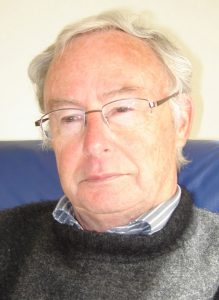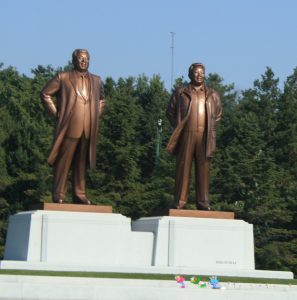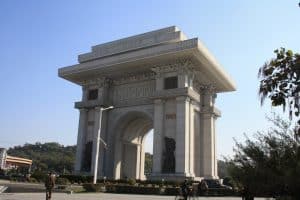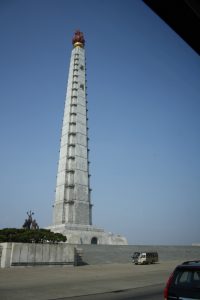Amazon.com: Tough Love: My Story of the Things Worth Fighting For (9781501189975): Susan Rice: Books

Tough Love: My Story of the Things Worth Fighting For Hardcover – October 8, 2019
by Susan Rice (Author)
5.0 out of 5 stars 5 ratings
Recalling pivotal moments from her dynamic career on the front lines of American diplomacy and foreign policy, Susan E. Rice—National Security Advisor to President Barack Obama and US Ambassador to the United Nations—reveals her surprising story with unflinching candor.
Mother, wife, scholar, diplomat, and fierce champion of American interests and values, Susan Rice powerfully connects the personal and the professional. Taught early, with tough love, how to compete and excel as an African American woman in settings where people of color are few, Susan now shares the wisdom she learned along the way.
Laying bare the family struggles that shaped her early life in Washington, DC, she also examines the ancestral legacies that influenced her. Rice’s elders—immigrants on one side and descendants of slaves on the other—had high expectations that each generation would rise. And rise they did, but not without paying it forward—in uniform and in the pulpit, as educators, community leaders, and public servants.
Susan too rose rapidly. She served throughout the Clinton administration, becoming one of the nation’s youngest assistant secretaries of state and, later, one of President Obama’s most trusted advisors.
Rice provides an insider’s account of some of the most complex issues confronting the United States over three decades, ranging from “Black Hawk Down” in Somalia to the genocide in Rwanda and the East Africa embassy bombings in the late 1990s, and from conflicts in Libya and Syria to the Ebola epidemic, a secret channel to Iran, and the opening to Cuba during the Obama years. With unmatched insight and characteristic bluntness, she reveals previously untold stories behind recent national security challenges, including confrontations with Russia and China, the war against ISIS, the struggle to contain the fallout from Edward Snowden’s NSA leaks, the U.S. response to Russian interference in the 2016 election, and the surreal transition to the Trump administration.
Although you might think you know Susan Rice—whose name became synonymous with Benghazi following her Sunday news show appearances after the deadly 2012 terrorist attacks in Libya—now, through these pages, you truly will know her for the first time. Often mischaracterized by both political opponents and champions, Rice emerges as neither a villain nor a victim, but a strong, resilient, compassionate leader.
Intimate, sometimes humorous, but always candid, Tough Love makes an urgent appeal to the American public to bridge our dangerous domestic divides in order to preserve our democracy and sustain our global leadership.
#1 New Releasein African-American & Black Biographies
See all 2 formats and editions
Hardcover
from $17.7910 Used from $23.8634 New from $17.791 Collectible from $85.00
Audio CD
$32.472 New from $32.47
From the Publisher


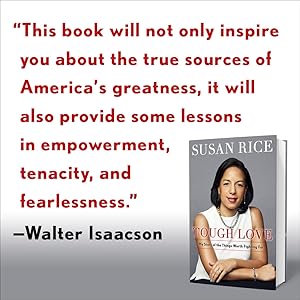

Editorial Reviews
Review
“This is a breathtakingly honest account by a true American patriot about what it’s like to grow up with tough love and then deploy those values on behalf of our nation’s foreign policies. Weaving together the personal and the professional, Susan Rice describes how her upbringing in a distinguished but at times struggling family helped prepare her to be a fierce champion of American interests and survive the unfair attacks on her in the aftermath of the Benghazi tragedy. This book will not only inspire you about the true sources of America’s greatness, it will also provide some lessons in empowerment, tenacity, and fearlessness.” -Walter Isaacson, New York Times bestselling author of Leonardo da Vinci
Susan Elizabeth Rice is one of the most gifted, tenacious, and influential foreign policy voices of our times, and in her revelatory new memoir Tough Love, she takes us to the seats of power she’s occupied from the State Department to the United Nations to the West Wing of America’s first black president, whom she served as National Security Advisor. In reading these pages, it’s easy to see why President Obama would trust her to give him the clearest assessment of the facts on any day, at any moment, and to offer him unvarnished counsel on how best to keep the country safe. At the core of Rice’s story, and brilliant career, is a fearless commitment to the truth and an unwavering devotion to the lessons she inherited as the descendent of Jamaican immigrants in Maine and enslaved Africans in South Carolina: to prize education as the path up to the American Dream and to have the confidence to be herself. In this remarkably honest examination of the opportunities and struggles confronting those charged with national security, Rice has given us an inspiring autobiography while making a critically important addition to the history of U.S. foreign policy.— Henry Louis Gates, Jr., Harvard University
“In Tough Love, Susan Rice provides a compelling look at what it is really like to work in the inner sanctums of the White House and what it really means to walk the corridors of power. In a gripping display of humor and grace, Susan invites us all to share in her triumphs and her failures – and she teaches some important life lessons along the way. Reading Tough Love is like taking a master class in how to be a powerful woman. It is also a classic American tale, relatable to anyone who has ever dreamed of success. I was riveted from the first page of Tough Love to the last.” — Shonda Rhimes
“Susan Rice’s intellect, strategic prowess, and integrity are unrivalled among today’s national security leaders. I have seen firsthand how she has achieved vitally important results for American interests and values. Tough Love finally reveals who Susan Rice really is, much of which has been lost or misunderstood in public portrayals of her. The fearless, compassionate, funny and selfless woman whom I have known since she was a child emerges as she shares with bracing honesty her challenges with family, motherhood, and leadership in the most demanding of male-dominated fields.” — Madeleine Albright, Former Secretary of State
“Tough Love is a must-read for leaders and their teams. A brilliant, courageous woman with a remarkable personal story, Susan Rice provides a riveting and moving account of rising to the highest ranks in national security and diplomacy along with unmatched insight into the most complex global challenges. She offers a masterclass for all who aspire to excellence, with invaluable lessons about high performance leadership and effective management of complex teams in unforgiving circumstances. Her powerful, hopeful appeal to our shared values as Americans and all that we stand to gain by coming together is profoundly inspirational and more urgent than ever.” — Indra Nooyi, Former Chairman and CEO, PepsiCo
“The daughter of up-by-their bootstraps Jamaicans and African Americans, Rice achieved early success through disciplined hard work, intellectual brilliance, and friendships with the likes of Madeline Albright… Rice is able to look back on her experiences with pride, gratitude, and bracing realism.” Booklist, Starred Review
“A stellar debut...Rice writes of juggling work and motherhood, and of the importance of being one’s own advocate. Rice’s insightful memoir serves as an astute, analytical take on recent American political history.”
Publishers Weekly, Starred Review
Read more
About the Author
Ambassador Susan E. Rice is currently Distinguished Visiting Research Fellow at the School of International Service at American University, a Non-Resident Senior Fellow at the Belfer Center for Science and International Affairs at Harvard’s Kennedy School of Government, and a contributing opinion writer for The New York Times. She serves on the boards of Netflix and the John F. Kennedy Center for the Performing Arts and previously served on several nonprofit boards, including the U.S. Fund for UNICEF.
Rice earned her master’s degree and doctorate in international relations from Oxford University, where she was a Rhodes Scholar, and her bachelor’s degree from Stanford University. A native of Washington, DC, and a graduate of the National Cathedral School for Girls, she is married to Ian Cameron; they have two children. Rice is an avid tennis player and a long-retired basketball player.
Product details
Hardcover: 544 pages
Publisher: Simon & Schuster (October 8, 2019)
Language: English
Customer reviews
5.0 out of 5 stars
5 out of 5
5 customer ratings
5 star 100%
4 star 0% (0%)
0%
3 star 0% (0%)
0%
2 star 0% (0%)
0%
1 star 0% (0%)
0%
Review this product
Share your thoughts with other customers
Write a customer review
5 customer reviews
Top Reviews
Karen
5.0 out of 5 starsInsightful & inspirational! Captivating from beginning to end!October 8, 2019
Format: Kindle Edition
I have read many autobiographies through the years. There were some that I truly enjoyed reading, and in all honesty, I will admit there were a few that I just could not get into and never finished reading. However, I have never read one that completely captured my attention throughout the entire book...an autobiography that pulled me in from the opening prologue and held my attention to the point that I read the entire book in one sitting. That all changed when I read Tough Love: My Story of the Things Worth Fighting For by Susan Rice.
The prologue takes place during the last few hours of the Obama administration, and is perfectly titled Farewell to the Moral Universe. Sadly, that title still fits today's divided political climate. She relays her skepticism on that day, as well as her hope that the new administration will be successful. She talks about the sadness she feels, as well as looking forward to the next chapter in her life.
Of course, there are some people that will never give this book a chance, and that is truly unfortunate. This book discusses politics, but the overall substance of this autobiography is so much more than just politics. Many people only know who Susan Rice is due to her appearance on the Sunday news shows back in 2012 regarding Benghazi, and her role within the Obama administration...they do not know about the journey she went through to get to there. Some people might be surprised to learn that in addition to her B.A, from Stanford University, she was a Rhodes Scholar and received her master's degree and doctorate from Oxford University. In this book, Susan Rice highlights in great detail how she became the woman she is today, and the important role her family played throughout her life.
Her family history is truly fascinating...one side descendants of slaves...one side immigrants...but all deeply devoted to family and all striving to become the best they can possibly be. At a time when race could hold a person of color back, her family overcame the obstacles and used their drive and determination to excel. She tells their stories with an openness that truly brings her intriguing family history to life. She is brutally honest as she relays their triumphs as well as their struggles, and how tough love was taught early on in all of their lives.
Susan covers just about every aspect of her life, and there is no hesitation to discuss her achievements as well as her failures. She beautifully weaves together every thread of her life, and in the end, gives the reader a captivating look into her personal life as well as her political life. Tough Love is definitely an autobiography worth reading!
I would like to thank Susan Rice, Simon & Schuster, and NetGalley for allowing me the opportunity to read and review Tough Love: My Story of the Things Worth Fighting For. My views are my own, and are in no way influenced by anyone else.
45 people found this helpful
HelpfulComment Report abuse
Mr. William Funderburk
5.0 out of 5 starsHighly relevant today--foreign policy with emotional and critical intelligenceOctober 10, 2019
Format: HardcoverVerified Purchase
Ambassador Rice provides the reader with assurance that despite the human frailties we all possess, most people who serve the nation's security do so with humility, grace, intellect and strategic wisdom.
Worldly enough not to be an "insider" but immersed enough to understand what it's like to grow up in the fishbowl inside the Washington, DC beltway, Ambassador Rice's reflections on the "tough love" she receive help to inform the collaborations and alliances she was able to skillfully balance. Her upbringing in a home of ultra high achievers surrounded by even more high achievers stands in stark contrast to her view of surviving as the child of a decade long divorce. Her world includes deeply personal and poignant stories and is one of someone self assured and self aware enough not to use her race as a crutch but wise enough to understand the importance of being color aware and not color blind.
Ambassador Rice's personal experiences serving President Obama with a team of truly stable, competent and dignified foreign policy experts is a reminder of a day that I yearn for. I look forward to finishing the book (and this review!) and seeing what she'll do next!
10 people found this helpful
HelpfulComment Report abuse
Cristie
5.0 out of 5 starsPowerful ReadOctober 9, 2019
Format: Hardcover
I have read many biographies and memoirs about powerful women, but this one really grabbed my attention. Susan Rice is known for appearing on Sunday shows about Benghazi, but this book thoughtfully and powerfully allows the reader to go on the journey with her to that point in history. She is honest and straightforward when explaining why she made the choices she had to. I found this to be a brilliant read and am hoping we hear more from Susan Rice in the future.
25 people found this helpful
HelpfulComment Report abuse
Amazon Customer
5.0 out of 5 starsPowerful, Educating, Transparent, Insightful & TimelyOctober 9, 2019
Format: Audible Audiobook
The Audible sample forced me to purchase this format in the interim of purchasing a hard copy…the prologue speaks penetratingly for itself.
The Tough Love: My Story of the Things Worth Fighting For by Susan Rice is one of the few autobiographies I have fully engaged which kept my attention from the first page to the last over a one day reading span.
Her honoring and reverencing of her family lineage were with humility and proudness. Rice’s specific reflection on the discord between her parents and the effect it took on her and her brother will slightly tug on one’s heart strings. Yet, on those unbreakable parental shoulders the siblings stood on, came from the historical sacrifices and presence of her father, Mr. Emmett, a Cornel professor and governor of the Federal Reserve, and her mother, Mrs. Lois, the Godmother of the Pell Grants (I'm a proud recipient which afforded me great relief in attending school while raising children) and later becoming the Vice President in navigating to the now known College Board. Rice's safeguarding in her generational lessons and notes comes from the backdrop of one parent's descendants of slaves, and one parent's descendants of immigrants, such a unity.
I wrote down dozens of words, passages and quotes throughout my listening, where her direct and no holds bar narration made the experience more personal and intriguing. The 5 Points and In the Time of Crisis…you’ll need to read the book to fully comprehend.
Aside from her groundbreaking presence in the white house, Rice has her B.A, from Stanford University, a former Rhodes Scholar earning both a master's and doctorate degree from Oxford University. Her educational and professional success comes from her parent’s lessons that she termed as “plain yet powerful”: "Don’t take no for an answer when the question is: Can I? - Family comes first and must stand together - Don’t forget where you come from.” Great lessons everyone should apply to their life's trajectory.
Susan Rice shares a non-duplicated and evidential detail in who she is, and how she evolved to become the woman she is today by her important roles working with both the Clinton and Obama administrations, serving her country, and sometimes being the scapegoat for political situations. All proven to be worthy experiences to endure and evolve from with the love and support by her close knit of relatives, friends, colleagues and mentors such as Madeleine Albright and Sandy Berger. Ultimately, the profound and non-wavering support from the 'love of her life' - her husband, her two children, brother and an unbreakable family tree.
Rice made it crystal clear that the skin of her color would not hold her back on any accord while overcoming personal trials and tribulations while utilizing those tough love lessons to preserve, excel and succeed.
“The combination — being a confident black woman who is not seeking permission or affirmation from others — I now suspect accounts for why I inadvertently intimidate some people, especially certain men,” she writes, “and perhaps also why I have long inspired motivated detractors who simply can’t deal with me.” For me, one of the strongest passageways from her book.
Tough Love: My Story of the Things Worth Fighting For by Susan Rice provided me with comprehensive history and present lessons that will forever resonate…such a necessary read for today’s climate.
Rice has no cut cards and this book will be gifted to my children.
6 people found this helpful
HelpfulComment Report abuse
Neelyville girl
5.0 out of 5 starsHow she was usedOctober 12, 2019
Format: Audible Audiobook
Very honest keeps your attention
One person found this helpful
HelpfulComment Report abuse
See all 5 customer reviews
 Photo Credit :CCIH
Photo Credit :CCIH Photo Credit: World Vision
Photo Credit: World Vision



